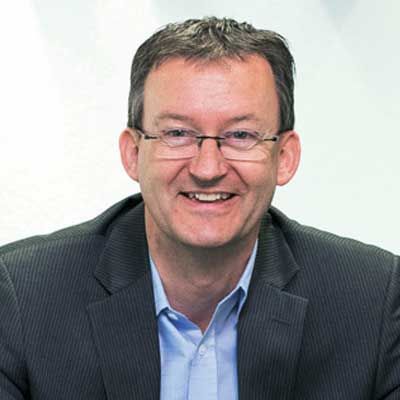We usually have about one-third of the entries from Asia Pacific
01 Feb 2020

LafargeHolcim Foundation for Sustainable Construction is presenting the 6th International LafargeHolcim Awards. This global contest has been garnering an encouraging response year-after-year from architecture, building, civil engineering, landscape and urban design, construction technology, and related fields. Edward Schwarz, General Manager, LafargeHolcim Foundation for Sustainable Construction, recently visited the IIT-Bombay to attend an event organised by LafargeHolcim’s operating company Ambuja Cement to promote the awards. After addressing the bright minds of IIT Bombay and exchanging ideas on creating a sustainable future; Schwarz spoke with SHRIYAL SETHUMADHAVAN, sharing more on the upcoming competition.
How does LafargeHolcim Foundation recognise sustainable construction projects?
Organising competitions is, ofcourse, one way through which we achieve this. But we also have international forums for sustainable construction that are organised every three years. In 2013, we organised a forum on Economy of Sustainable Construction, which witnessed a gathering of about
400 people in IIT-Bombay. Ahead of the competitions and conferences, we release a series of books publishing all winning projects. About half the projects we award, for many reasons, never get billed. Yet we maintain their details as they certainly had good ideas in them.
The foundation will present the 6th International LafargeHolcim Awards. What are the categories?
There are two categories. The main category is open for everyone, independent of your age and type of project. The only criterion is that the project needs to be at an advanced stage of design and execution of the project may not have started before January 1, 2019.The idea is to bring in entries from new projects. The second category is the Next Generation category, which is open not only for projects but also visions and ideas. This category has an age limit of 30 years or less. The last date for entries across both categories is February 25, 2020.
How is the quality of entries and response from India?
We usually have about one-third of the entries from Asia Pacific, which is valid for the entire competition. So, here we are talking about 2,000 entries; of this, in the last competition, about 300 were valid from India. But this does not mean that only 300 were entered. There could have been many more entries that did not comply owing to formal reasons. The independent juries – representing experts from architecture, engineering and planning – in each of the five regions evaluate and rank the entries post a technical assessment. The regional juries are hosted by the associated universities and coordinated by the Academic Committee of the foundation.
The foundation has identified ‘target issues’ that serve as criteria for projects submitted for the awards and a roadmap for
related activities.
The target issues are a way in which we try to define sustainability in construction. We started in 2003 and they evolve every three years to adapt to current needs. In general, there are three main issues related to the triple bottom-line: Environmental issues, Social issues and Economical issues. And they have to somehow be balanced. We have developed these as what we call the five Ps: People for social issues, Planet for environment issues, Prosperity for economic issues, Place for contextual and architectural issues, and Progress for innovation and transferability. These five target issues try to make a holistic picture of sustainability.
To share your views, write in at feedback@ConstructionWorld.in
Related Stories

